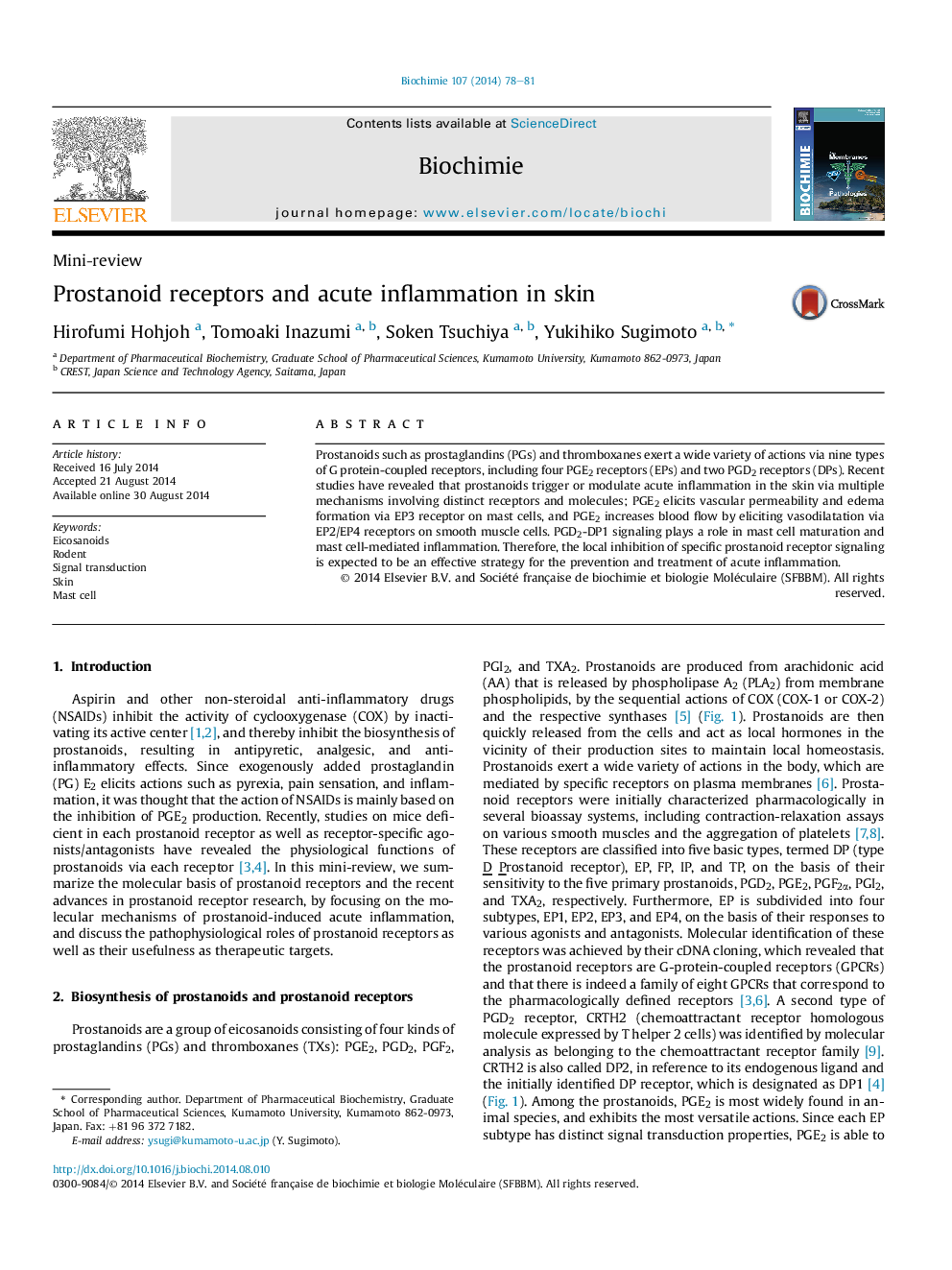| کد مقاله | کد نشریه | سال انتشار | مقاله انگلیسی | نسخه تمام متن |
|---|---|---|---|---|
| 1952095 | 1057164 | 2014 | 4 صفحه PDF | دانلود رایگان |
• Prostanoids such as prostaglandins (PGs) exert various actions via multiple receptors.
• PGE2-EP3 signaling triggers mast cell (MC) activation and edema formation.
• PGE2-EP2/EP4 signaling increases blood flow by eliciting vasodilatation.
• PGD2-DP1 signaling plays a role in MC maturation and MC-mediated inflammation.
• PGs stimulate skin inflammation via multiple mechanisms involving distinct receptors.
Prostanoids such as prostaglandins (PGs) and thromboxanes exert a wide variety of actions via nine types of G protein-coupled receptors, including four PGE2 receptors (EPs) and two PGD2 receptors (DPs). Recent studies have revealed that prostanoids trigger or modulate acute inflammation in the skin via multiple mechanisms involving distinct receptors and molecules; PGE2 elicits vascular permeability and edema formation via EP3 receptor on mast cells, and PGE2 increases blood flow by eliciting vasodilatation via EP2/EP4 receptors on smooth muscle cells. PGD2-DP1 signaling plays a role in mast cell maturation and mast cell-mediated inflammation. Therefore, the local inhibition of specific prostanoid receptor signaling is expected to be an effective strategy for the prevention and treatment of acute inflammation.
Journal: Biochimie - Volume 107, Part A, December 2014, Pages 78–81
